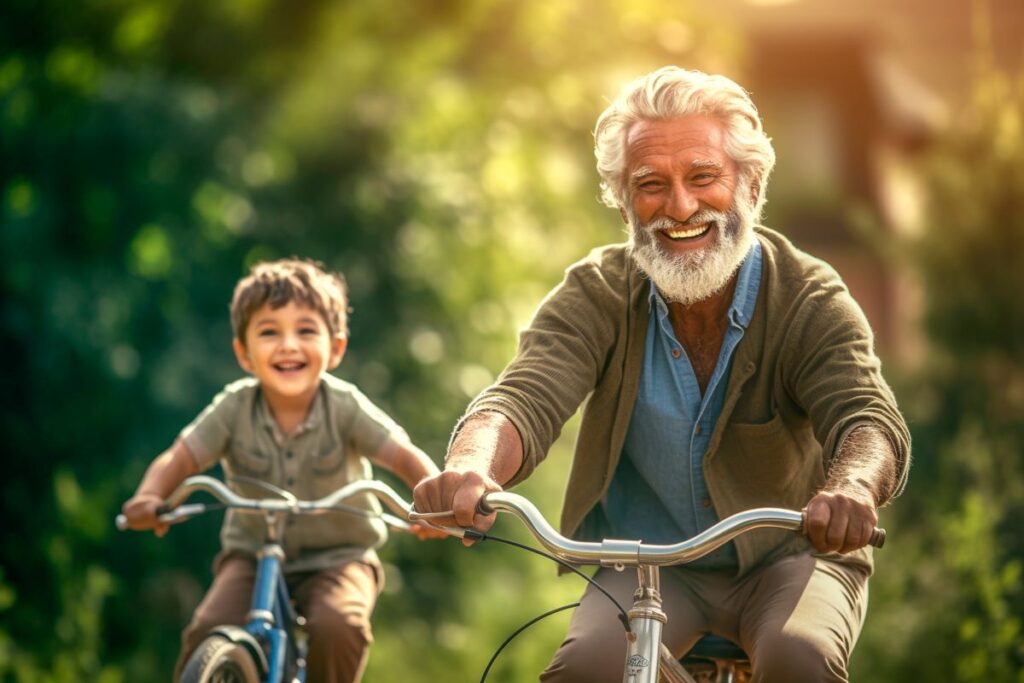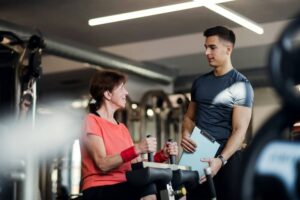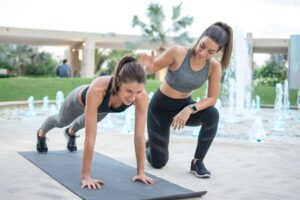In this article, we explore safe and effective exercises for all ages, offering practical tips and guidance for children, teens, young adults, and seniors alike. Staying active is essential for health and well-being, regardless of age. Whether you’re looking to build a foundation of fitness, maintain your current level of activity, or adapt your routine to accommodate the natural changes of aging, you’ll find valuable insights to help you stay active and healthy throughout your life.
Benefits of Exercise No Matter Your Age
Exercise can provide numerous benefits, from improving cardiovascular health to enhancing mental clarity and emotional well-being. However, as we progress through different stages of life, our bodies have unique needs and challenges that require tailored fitness routines. As you age, concerns about the potential risks of exercise may arise. However, it’s important to note that there are numerous safe and effective exercises suitable for all ages. Additionally, there are always alternative exercises that are easier to perform while being equally effective compared to more strenuous ones.
Exercises for All Ages
As we move through different stages of life, our bodies have unique needs and challenges that require customized fitness routines. Here are practical tips and guidance for safe and effective exercises, from childhood to older age.
Kids: Play and Grow Strong
Children get enough exercise easily. It’s recommended that they get at least an hour of physical activity each day, but most kids get that much just by being kids. Running, playing on the playground, and riding their bikes all provide aerobic exercise and help strengthen bones, while climbing trees, playing on the jungle gym, and doing gymnastics help build their muscles.
Teens: Stay Active, Stay Strong
Teenagers need an hour of exercise each day, just like younger children. It may be harder for them to get this exercise in, though, unless they’re into sports. Encourage them to be active, whether through school sports or a recreational league, or give them other opportunities to be active. This could be riding bikes with their friends, hiking, swimming, or even playing ball in the yard. Many teens also become interested in weight training, which is good for building strong muscles and bones.
20s: Build Your Fitness Foundation
Most 20-somethings are strong and healthy, so it’s a great time to begin really building a foundation of fitness. Make exercise a regular part of your routine, playing sports like tennis with friends, hiking, biking, or swimming. Now is the time to get into the habit of exercising 30 minutes a day, five days each week. Incorporate cardio, balance work, and stretching and focus two of those days on muscle-strengthening exercises. Cross training is a good workout for people in their 20s. It provides a challenge while offering both aerobic and anaerobic exercise. Strength training is especially important for women at this age, because the 20s are the best time to increase bone density. For men in their 20s, yoga can be a good exercise for establishing flexibility and mobility, creating healthier posture, better spinal alignment, and looser muscles.
30s: Plan and Push Forward
In our 30s, life gets busy, and exercising requires planning. A good coach can give you the motivation you need to exercise to start counteracting the effects of aging. It’s in the 30s that the body first begins to lose muscle mass, and you might notice that it takes you longer to recover from a workout than it did in your previous decade. Try to focus on weight training and bone strengthening, incorporating weight-bearing activities into your routine. Don’t skimp on the cardio in favor of lifting weights, though; you still need cardio at least three times a week. Mix it up, trying different types of exercise and keeping your workouts well-rounded. If you normally do a lot of swimming, try biking or dancing to work different muscles. Interval-based cardio like spinning is a great workout, too, and high-intensity interval training may be better for you than steady cardio.
40s: Maintain and Strengthen
In your 40s, exercise becomes crucial as your body starts to decline, with muscle loss, slower metabolism, and easier weight gain. This increases the risk of conditions like high blood pressure and heart disease. Maintain cardio three to five times a week and focus on muscle-strengthening exercises. If you experience more pain, switch to lower-impact activities like swimming but include some weight-bearing exercises. Hiking is a great option, and gradually increasing the intensity can help you find a routine that suits your fitness level.
50s: Adjust and Thrive
Don’t let the aches and pains of the 50s slow you down. Instead, adjust your exercise routine, switching to low-impact activities that are easier on the joints, like walking, biking, and swimming. If you find that you’re sore after your workouts, try reducing the intensity in favor of more frequent exercise. Focus on the muscles of your abdomen and back to strengthen your core and fight the changes in posture that come with age. Keep up the resistance training, especially for the hips and shoulders, to counteract the slowing of bone and muscle development. Walk as much as you can, because leg strength is important not just for your physical well-being but also to fight cognitive decline.
60s: Balance and Prevent Falls
Exercises for older adults should focus on improving and maintaining balance to prevent falls and other issues. Aim for at least 30 minutes of exercise five times a week, incorporating weights or resistance training two or three times. If you’re low on energy, remember that consistent exercise can boost your energy levels and help maintain your independence. Simple activities like regular walking, bodyweight exercises (such as sit-ups or push-ups), and attending a yoga class one or two days a week can be effective. At this stage, consistency is more important than intensity; overly strenuous exercises can lead to injury. Opt for low-impact activities and ensure you include weight-bearing exercises at least twice a week, as they support mental function.
70s: Flexibility for Independence
Older people who maintain their strength and flexibility typically have many more years of independence and functionality than their sedentary peers. Continue to get aerobic exercise, work on your balance, and use resistance bands for muscle strengthening. Take extra time to warm up and cool down and remember to stretch for flexibility. Fit in some low-impact cardio at least three times each week.
80s and Beyond: Stay Strong, Stay Sharp
As you enter your 80s and beyond, maintaining physical and mental vitality becomes increasingly important. Almost any form of exercise can help strengthen both your body and mind during these years. Prioritize resistance training to preserve and build muscle strength, which is crucial for maintaining independence and overall health. Engaging in regular physical activity can also support cognitive function, helping you stay sharp and alert.
Consider working with a personal trainer who specializes in senior fitness. A trainer can tailor exercises to your specific needs and abilities, ensuring that you perform movements safely and effectively. They can also help you establish a balanced routine that incorporates strength training, flexibility exercises, and cardiovascular activities, all of which contribute to a healthier and more active lifestyle.
Physical and Mental Wellness at Any Age
Pledge To Fitness is dedicated to supporting physical and mental wellness at every age, with many of our clients being seniors. Our customized training programs cater to their specific needs, helping to build muscle, increase mobility and strength, improve balance, and aid recovery after physical therapy. A notable example is Mickey Rosenau, age 92, who was recently featured in The Buzz Magazine. In the article, Mickey shares his wisdom on staying active, simply saying, “Enjoy it!”
Rosenau should know. He’s been enjoying fitness for his whole life, doing fun and effective exercises like canoeing and scuba diving. In fact, he only quit scuba diving at age 86, when he began to be concerned about his ability to handle dangerous currents. Now he works out at home most days, on a treadmill and by doing forearm planks. Twice a week, he works out at Pledge To Fitness, with owner, founder, and trainer Andres Loperena. Rosenau enjoys this, not just for the workout, but for the social interaction.
Comprehensive Wellness with Personalized Support
At Pledge To Fitness®, we offer a holistic approach to wellness. Our blend of physical training, massage therapy, and nutrition coaching helps you reclaim your energy, passion, and motivation in body, mind, and spirit. The Pledge System™ guarantees results. Our dedicated team provides expert care, personal attention, and motivation to help you build and maintain physical energy and resilience. We create individualized wellness plans tailored to your physical condition and goals, while accommodating your budget and schedule. Contact us at your convenience to schedule a complimentary consultation online or at our fitness studio in the heart of Houston, TX.



